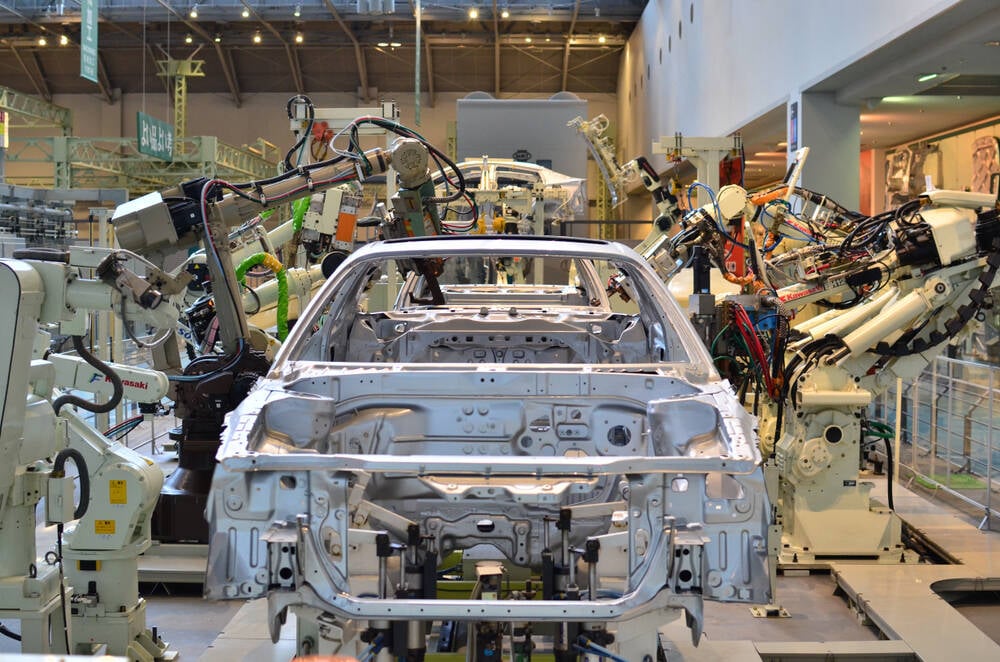Several Japanese automakers have been caught cheating certification tests, and Toyota could be the worst offender.
Japan’s Ministry of Land, Infrastructure, Transport and Tourism (MLIT) said yesterday that its ongoing investigation into 85 domestic manufacturers, including several carmakers, had found that most acted in accordance with the law, but not Mazda, Yamaha, Honda or Suzuki.
All four investigated their own activities under MLIT warrants, discovered falsifications in type-approval applications and were “found guilty of fraud,” the ministry said. Offending companies were ordered to suspend the shipment of vehicles whose certification tests were falsified and to correct their deficiencies as soon as possible.
Mazda was found to have rewritten its engine control software to influence output tests, while Yamaha and Honda both submitted false noise tests. Suzuki lied about its braking system test results, and Mazda also falsified crash tests.
And then there is Toyota
Of the five major Japanese car manufacturers involved in the fraud, only one is still under investigation: Toyota. No stranger to being caught in a lie, the automaker has gone into full-on apology mode.
Toyota released its own detailed statement to further explain what MLIT reported as “submitting false data in pedestrian protection tests for three currently produced vehicles” and “spoofing crash test vehicles for four previously produced vehicles.” The lies actually served the interests of consumers, Toyota claimed.
Toyota said it had found six cases of these seven models “where the testing methods differed from the standards set by national authorities”, but stressed that none of the vehicles involved are unsafe.
Shinji Miyamoto, head of Toyota’s Customer First Promotion Group, said that in most cases there were “heavier testing conditions” and that the data provided to the government went beyond what was strictly required by law. In one example, a heavier moving barrier was used to test for fuel leakage in a rear-end collision than required by law, resulting in a greater impact.
Toyota also failed to distinguish between passenger and driver side when reporting damage to a pedestrian’s head and legs in a side impact, and in another case Toyota provided data on the risk of luggage shifting using a old, non-regulatory baggage test pad. Ultimately, Toyota failed to achieve target engine power during a test, and instead of shutting it down to fix things as needed, “the engine control system was adjusted… and the retested data was used for certification” , Miyamoto said.
Toyota added: “we have conducted internal verifications on all cases and confirmed that they all meet the legally defined standards and are therefore safe to use by our customers,” Toyota Chairman Akio Toyoda said of the affected vehicles.
“Nevertheless, these acts shake the foundations of the certification system, and as a car manufacturer we believe that these are acts that should never be committed,” the chairman added. “As the person responsible for the Toyota Group, I would like to sincerely apologize. I am truly sorry.”
Toyota said the tests included the 2014 Crown model vehicles and the 2015 model year Isis, Sienta, Crown and Lexus RX vehicles, none of which are still in production. Current vehicles caught up in the mess include the Corolla Axio and Corolla Fielder, as well as the Yaris Cross, production of which has been suspended in Japan.
It is not clear how many vehicles were sold under fake certificates and whether they were distributed outside Japan. Toyota vehicles in the US, where models overlap, are not affected, we are told.
“The issues identified by [Toyota Motor Corporation] are based on a review of previous certifications against Japanese requirements,” a North American Toyota spokesperson said The register. “Vehicles sold in North America are certified using different processes and to different standards applicable to North American markets.”
Toyota was caught earlier this year cheating certification tests for its diesel engines by rewriting engine performance software to miscalculate the results, à la VW, and in 2022 the company’s Hino heavy-duty vehicle subsidiary admitted to falsifying similar results that going back to 2003.
The apologetic Toyota Chairman Toyoda emphasized that the investigation was ongoing (as did MLIT, which said that “only misconduct uncovered to date will be reported”), but said he believed the company had now was heading in the right direction with regard to achieving success. right side of car controls.
“These efforts will have to be made steadily and will take time, but I will move to the next step [factory floor] myself and take responsibility for their progress,” added Toyoda.®
